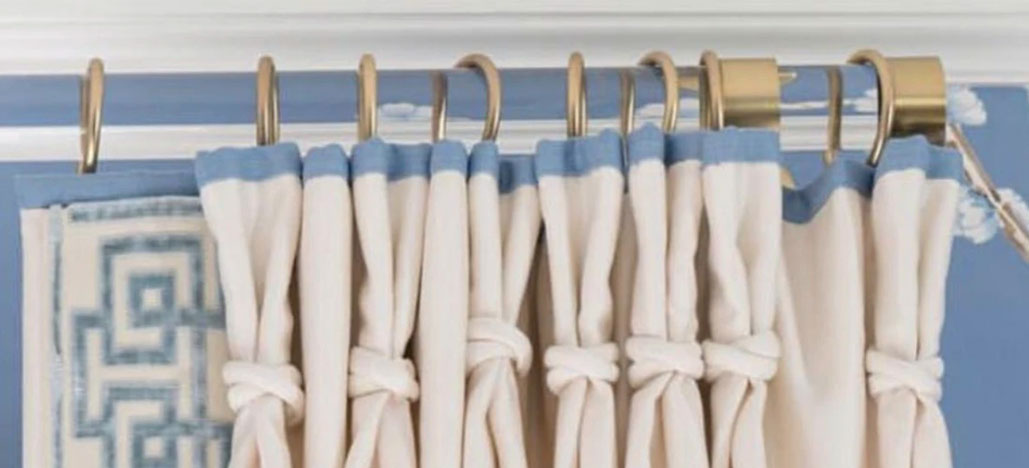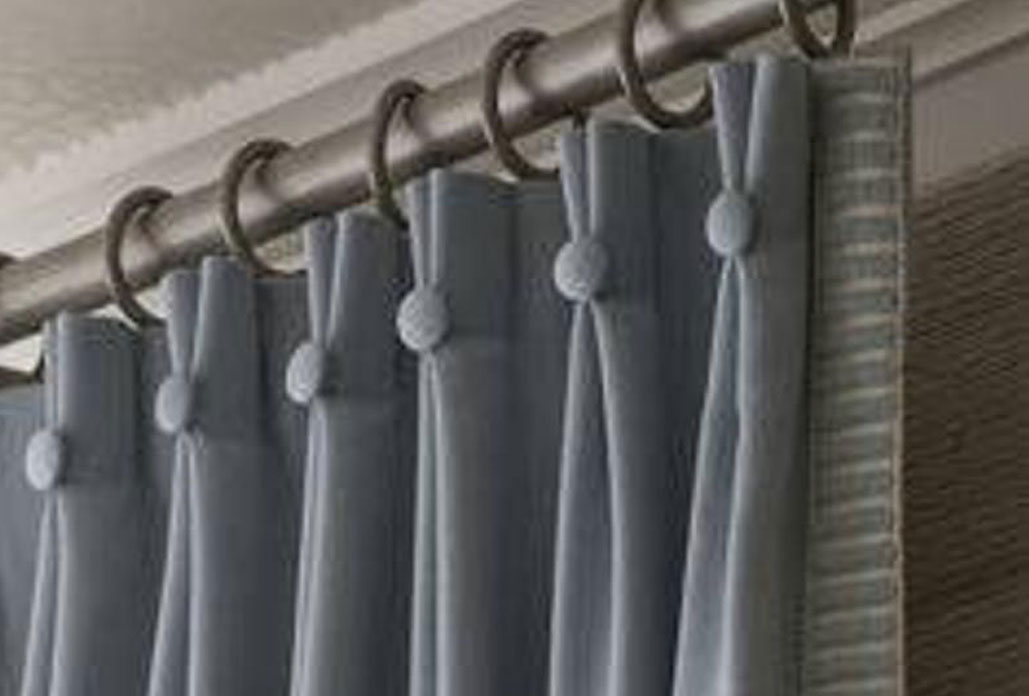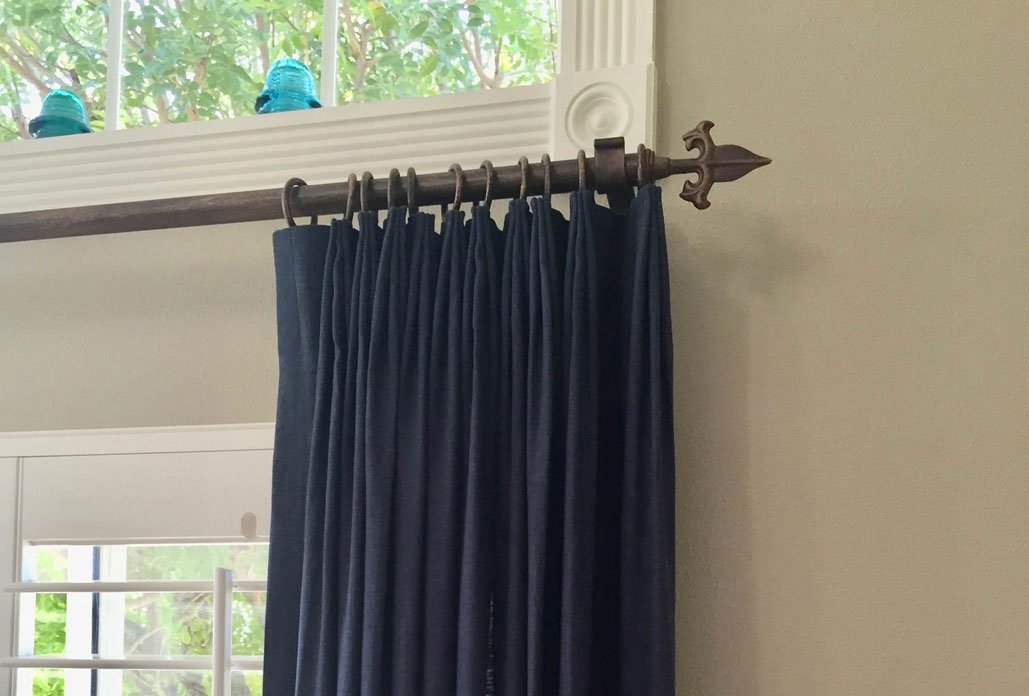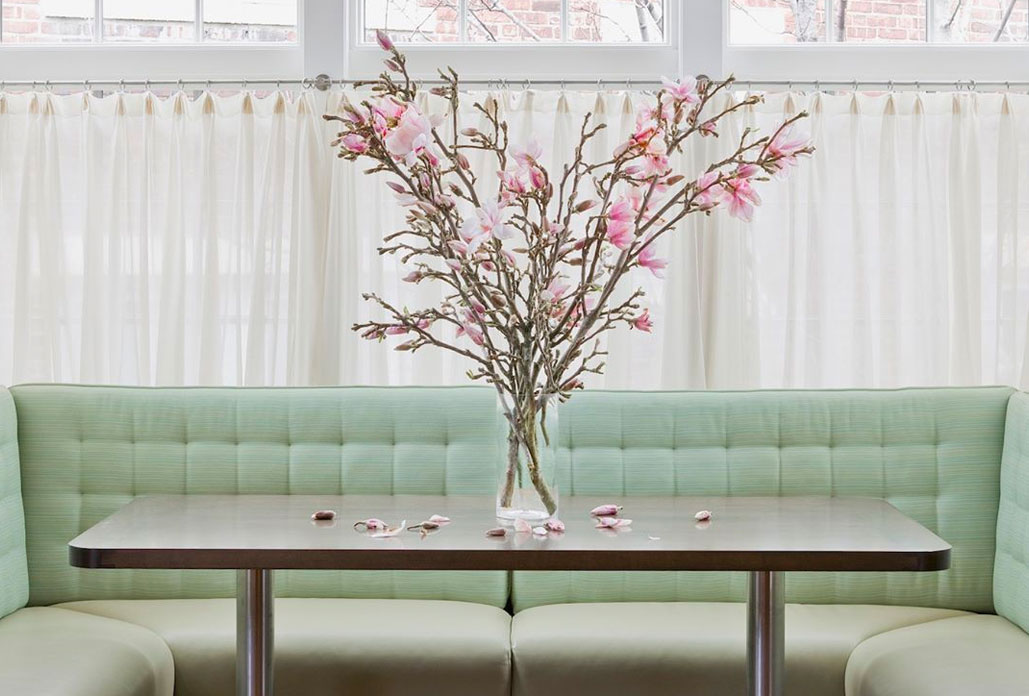Oh the Possibilities
There are so many ways to make a drape more interesting by adding trims, knots, buttons, etc. To get the desired look you want I can help design them with your current color scheme and personal preferences in mind. I can walk you through what will and what won’t work without the headaches and mistakes. Inspirational photos are the best. Here are a few for us to discuss the terminology of each detail.

Maybe you were thinking the perfect treatment for the space would be a pair of custom draperies. In another blog called “Drapery Header Styles” you can find the correct terminology for each pleat style. In addition to the type of pleats that are available, you might consider how those pleats are to be finished. In the above photo you can see a knot was placed at the base of the pleat and this creates a beautiful detail, one you might want to consider. A tape trim has been placed on the leading edge of the drapery. Tape trims can vary in width so placement is always something very important you need to think about. The rod that the drapery is hanging from is an acrylic rod with gold accents.
Now would be a great time to talk about where to set the decorative tape on a drapery panel. Depending upon if you are using a rod with an overlap system or a rod with rings you have your limits on the placement of decorative tape. If using the overlap system (traverse rod) you have a space of 2 ½” to set decorative tape onto. If your decorative tape is wider than 2 1/2” it will not fit into the overlap carrier. If you are using a rod with rings you can adjust that flat piece (called the overlap or leading edge ) of fabric to fit your tape.. In the picture of the white drapery above, you can see this decorative tape is fairly wide and it is on a rod with rings so the overlap flap could be adjusted to fit the tape. This drape has a flange across the top of the drapery which is a beautifully added detail. A flange is made from a contrast fabric and is typically ½” wide.

This is a photo that shows a three finger pleat drapery with a decorative tape trim on the leading edge. This is a rather wide tape and requires a larger overlap to get it to set off the edge. The tape is placed ½” from the leading edge. This could be accomplished easily because the choice of hardware was rod and ring. Setting the tape off the edge creates a flange type look on the drapery. There are endless possibilities of tape trim that range from $20 per yard to tapes that are in the $100 dollar per yard and only go up from there. Be sure when picking a tape you remember to think about what type of hardware you are using so you can decide how and where to place the tape trim you select.

This photo is of a drape that has a tape trim that is set directly on the edge of the drape without being set back. The two finger drape is tacked at the bottom of the pleats with a covered button from the same fabric to add a subtle elegant touch. Another choice would have been to use white buttons and give it a more dramatic effect. This can be done on a printed drape as well. You might have a floral fabric that has multiple colors in it and you could choose which color to accent. The choices are limitless.

This drape is a color blocked drape. In this photo blue has been added to the top of the drapery app ¼ down from the top. Then tape trim was added horizontally to cover the seam. This was added to the white fabric that continues down to the floor. This is a creative way to design a drapery that is totally unique.

Tape trim can be made into a pattern on the bottom or top of your drapery. Remember in choosing the tape, it needs to be flexible and not too thick but yet not too thin. The drapery with the green tape trim has an interesting detail to discuss. See how the drape bends onto the floor. This is called a break. This is typically reserved for draperies that are non-functioning. When specifying drapery lengths be sure to discuss if you want them off the floor, breaking on the floor or puddling on the floor. These details are not only important to the overall look but have to be considered when estimating your finished length. The term for non-functioning draperies is “side panels”.
In the photo, the purple draperies have a large flat space on the leading edge to allow for a large pattern to be placed in such a way. This would not work well as functioning drapes but it does work great as side panels.

Cafe drapes are a beautiful way to finish out a window. Typically done in a kitchen, bath or laundry room setting. Cafe curtains can be hung anywhere from ⅔ up in a window or halfway. They can be made sheer for minimal privacy or out of a fabric and be lined. You have all the same options with a cafe drape as with full-length draperies. You can add flanges, tape or buttons. You can have different style pleats as well. We do reduce the size of the header and the size of the hem to be in scale with the overall drape.
As you can see there are some many ways to complete a drapery project. The possibilities are truly only as limited as your imagination. Give me a call and we can discuss your drapery project and all its possibilities.





